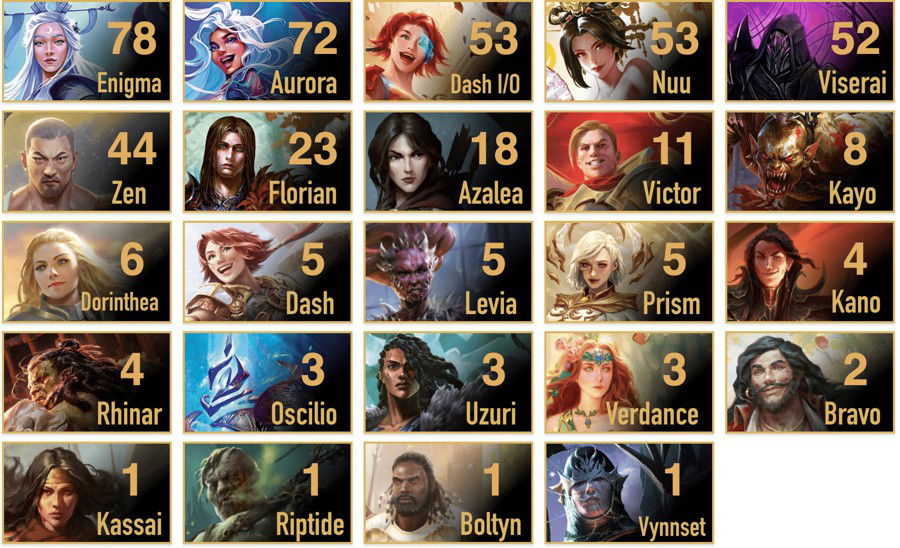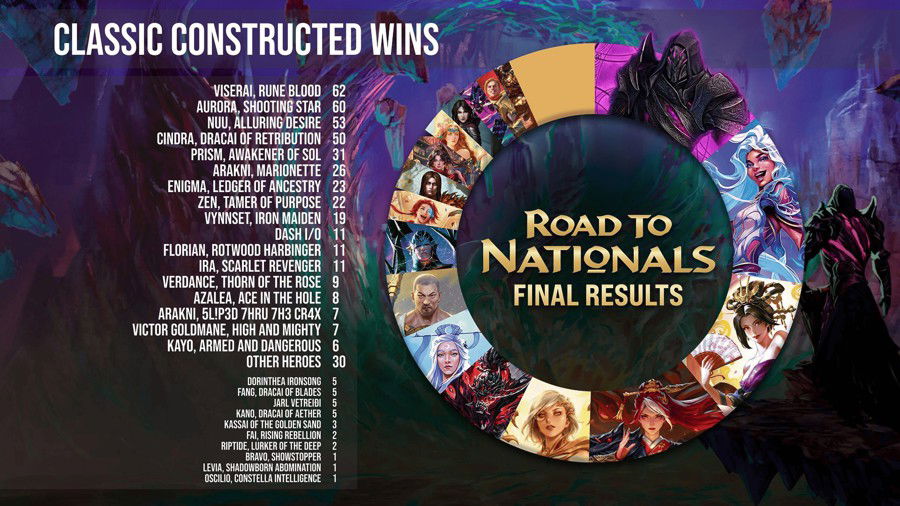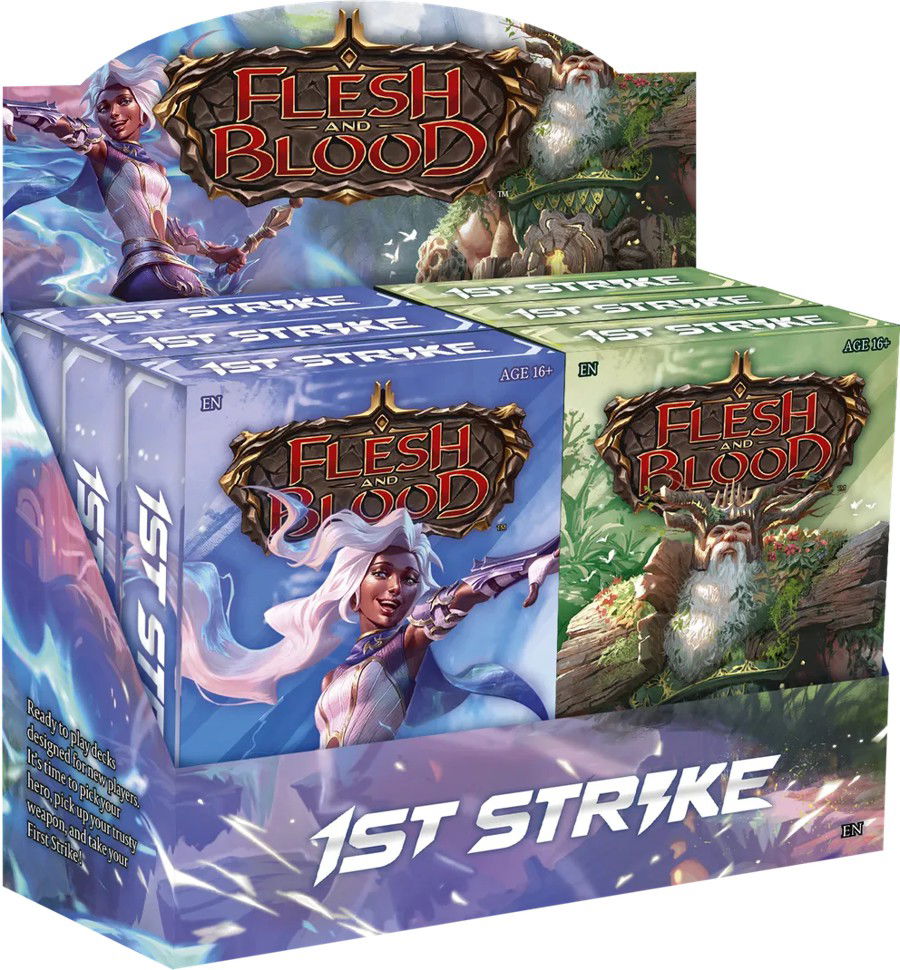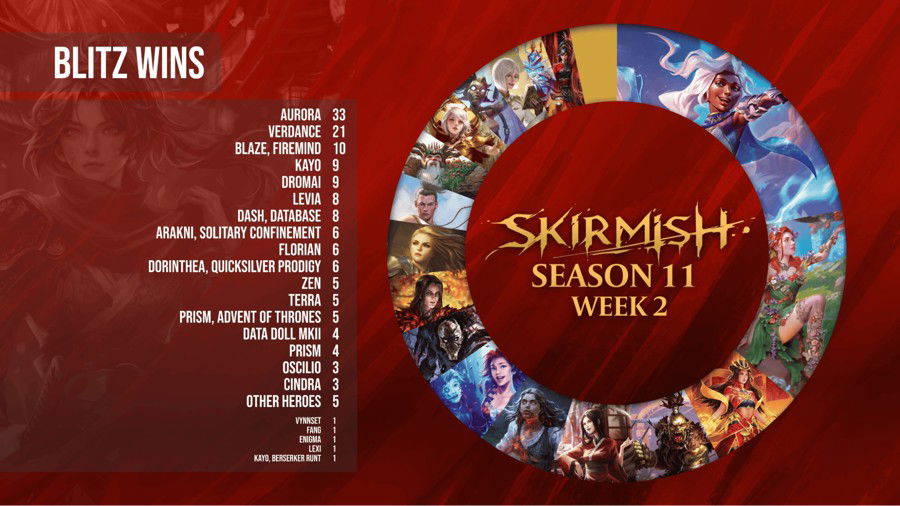Introduction
A few weeks ago, Enigma, Ledger of Ancestry and Zen, Tamer of Purpose rotated out of Classic Constructed, and, as such, Part the Mistveil was nearly completely out of this format. However, they weren't the only heroes we thought would leave this format. Recently, another hero has reached Living Legend status, and that's concerning for the game as a whole.
Let's talk about Aurora, Shooting Star!
As Fast As Lightning

Aurora, Shooting Star was released in Rosetta, a very recent set that is still fresh in most players' minds. This set brought back two talents (Earth and Lightning), two classes (Runeblade and Wizard), and focused on arcane damage.

While the Wizard heroes (Oscilio and Verdance) have yet to become strong or popular in Classic Constructed, the Runeblade heroes immediately shook the format. Florian, Rotwood Harbinger leans towards Midrange and has an excellent late game, but some other heroes, like Enigma, Ledger of Ancestry, were holding him back. Nonetheless, he did rather well when he first came out.
Ad
As for Aurora, she was another type of star altogether. Viserai, Rune Blood might have been the best aggressive deck in the format, but she wasn't much behind in terms of firepower. The fact she consistently let you set up 0-cost attacks for 4 power and how incredibly easy to pilot her deck was quickly made her one of the most popular heroes among players.
In any tournament, regardless of size, Aurora was there, as popular as ever. Already in her first competitive season (at Pro Quest: London), she (and Enigma) won the most tournaments out of all the other heroes.

All this popularity and power brought her into the spotlight at the Osaka World Championship, where she was the most popular aggressive list.

Soon after this event, a new banlist update targeted Dash I/O and Enigma very heavily, and, some time later, The Hunted came out. We believed Cindra, Dracai of Retribution would be the new best aggressive deck in the format, but this didn't last. Viserai, Rune Blood was at his peak, just a few steps away from Living Legend status.
When he did reach it, most of us were convinced Aurora was now the best hero in the format, and would remain so until High Seas. Yet, this set hasn't come out, and she's already a Living Legend.

Ad
But, after all, what made Aurora so strong since the very beginning?
A Deck With No Weaknesses

All these past Living Legend heroes seemed "unfair" when they first came out. Zen kickstarted one of the worst metas in Classic Constructed, Bravo, Star of the Show (or Starvo) was the best (and strongest) hero in Flesh and Blood, Chane was the best aggressive list in the history of the game, and so on and so forth. However, it's hard to say Aurora seemed that "unfair" when she first came out. Yet, she was the second-fastest hero in the game to reach this status (Starvo was the fastest). Why?
Well, she was extremely flexible and only had a few weaknesses.

Against aggressive decks, Aurora could play a very strong equipment set (all pieces blocked at least for two) and lean on Sigil of Suffering (1) to, potentially, draw Channel Lightning Valley. Furthermore, Electromagnetic Somersault (1) let you block up to six and return Attack Actions to your hand. And, when you needed to speed up the game with Aurora, Burn Up and Lightning Press (1) dealt a lot of damage quite fast.

Ad
Against Midrange and/or disruptive strategies, when sometimes you couldn't play your entire hand every turn, Aurora could, very well, play slower, more patiently. We'd use Fyendal's Spring Tunic to attack with Star Fall "for free" every three turns. Furthermore, some Attacks, like Exude Confidence, punished decks with Defense Reactions, and value-focused strategies were very common (blocking with two cards and returning at least seven or eight damage). In this value trade, Aurora won because she dealt Arcane damage, which was often too punishing for the opponent in the late game.

Even against fatigue, Aether Ironweave combined with the Gold created by Crown of Dominion made Arc Lightning / Flicker Wisp combos stronger. This way, each Go Again attack dealt 2 Arcane damage (besides the regular damage they dealt).
With so many ways to attack, Aurora's consistency and popularity made her one of the best heroes in the format since the very beginning. Furthermore, as no other heroes could stop her, and no other tools could actually deal with her strategy, she was free to stack up points rapidly.
The Issue Behind Her Fast Rise to Power
Overall, when we discuss a hero's fast rise to the peak, we bring up how this affects the meta, but often forget how it affects sealed products or the cards that rotate out of the format with the hero. This time, however, Aurora's journey brought on very negative consequences.

Back in August 2024, LSS released a new line of products for beginners: 1st Strike decks. These were very simple Blitz decks that included a few exclusive cards and were supposed to introduce new players into the game. This line of product featured two heroes in particular: Terra and Aurora.
Ad
Some time later, LSS released the Aurora Armory Deck. It was a weird decision, as Aurora didn't need more support or a precon, but there was a reason behind it: the idea was to introduce new players into the game with 1st Strike decks, then have them move on to this Armory Deck, and, after that, they could start playing tournaments.
Aurora was deemed the "beginner hero", just like Ira, Crimson Haze was a few years ago. Her rapid ascension to the top now not only leaves new players with no options to play, but also makes all these sealed Aurora-focused products obsolete.
She is still available in Blitz, but, if LSS doesn't do anything, she'll follow the same path there as she did in Classic Constructed.

What Can We Expect From Now On?
Though many players celebrated the news that Aurora was leaving Classic Constructed, her fast rise to the top had dire consequences for the game: new players invested in cards they can't use now, will have a harder time migrating to another, more difficult class/hero (considering Aurora only used a few Runeblade cards) and will probably hesitate to build new decks, fearing another similar situation.
On May 19th, LSS will release another banlist update that should change the current meta. Florian, Rotwood Harbinger can occupy a lot of space right now and could follow in Aurora's footsteps. Meanwhile, in Blitz, Aurora and Verdance could also rise too fast to the top and become Living Legends sooner than we'd like to.
High Seas is just around the corner, and the meta will still change considerably until then, but only time will tell what we can expect for the future.
Ad
What did you think of Aurora? Tell us your thoughts in our comment section below.
Thank you for reading, and see you next time!








— commentaires
0Soyez le premier à commenter